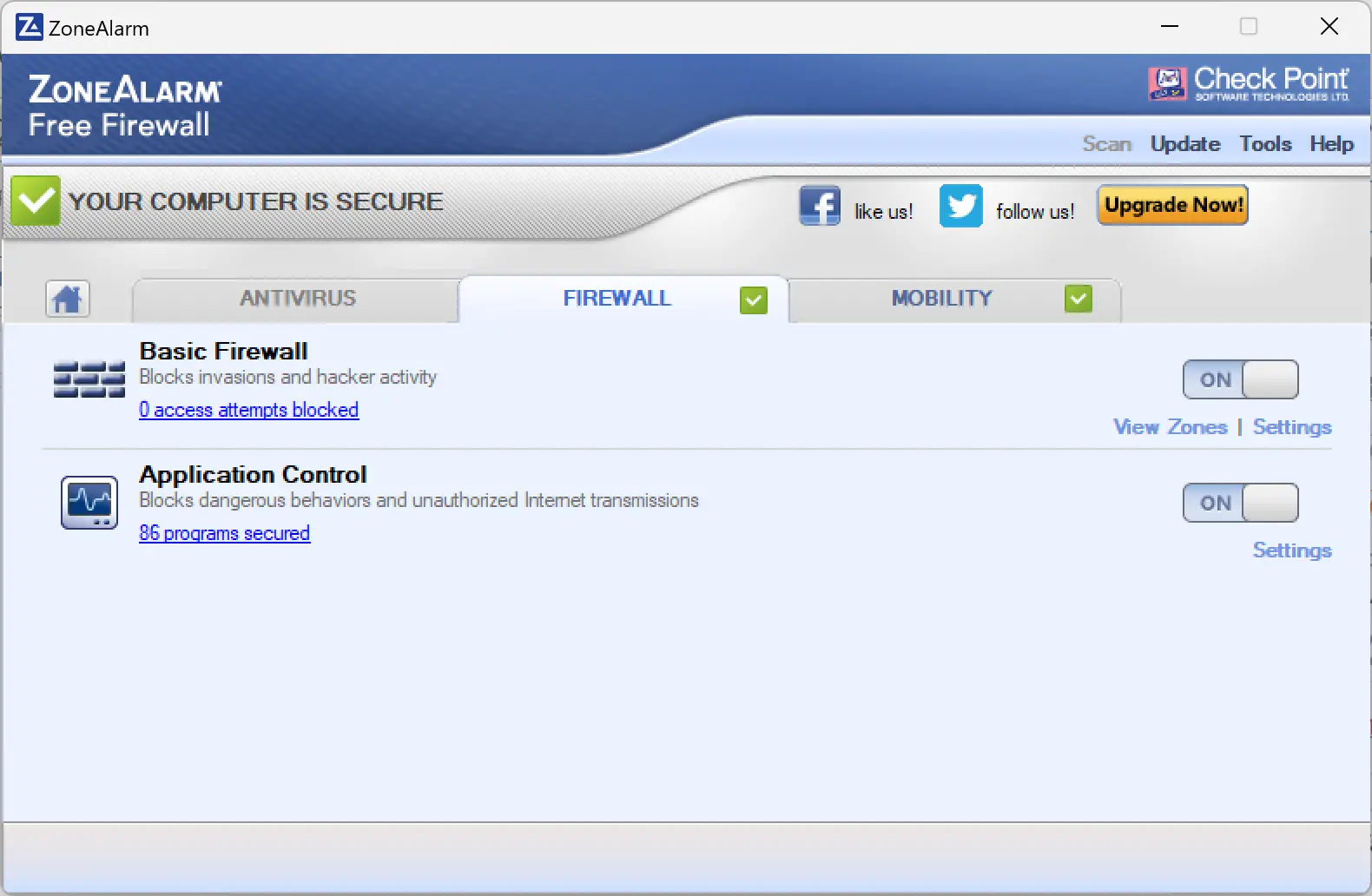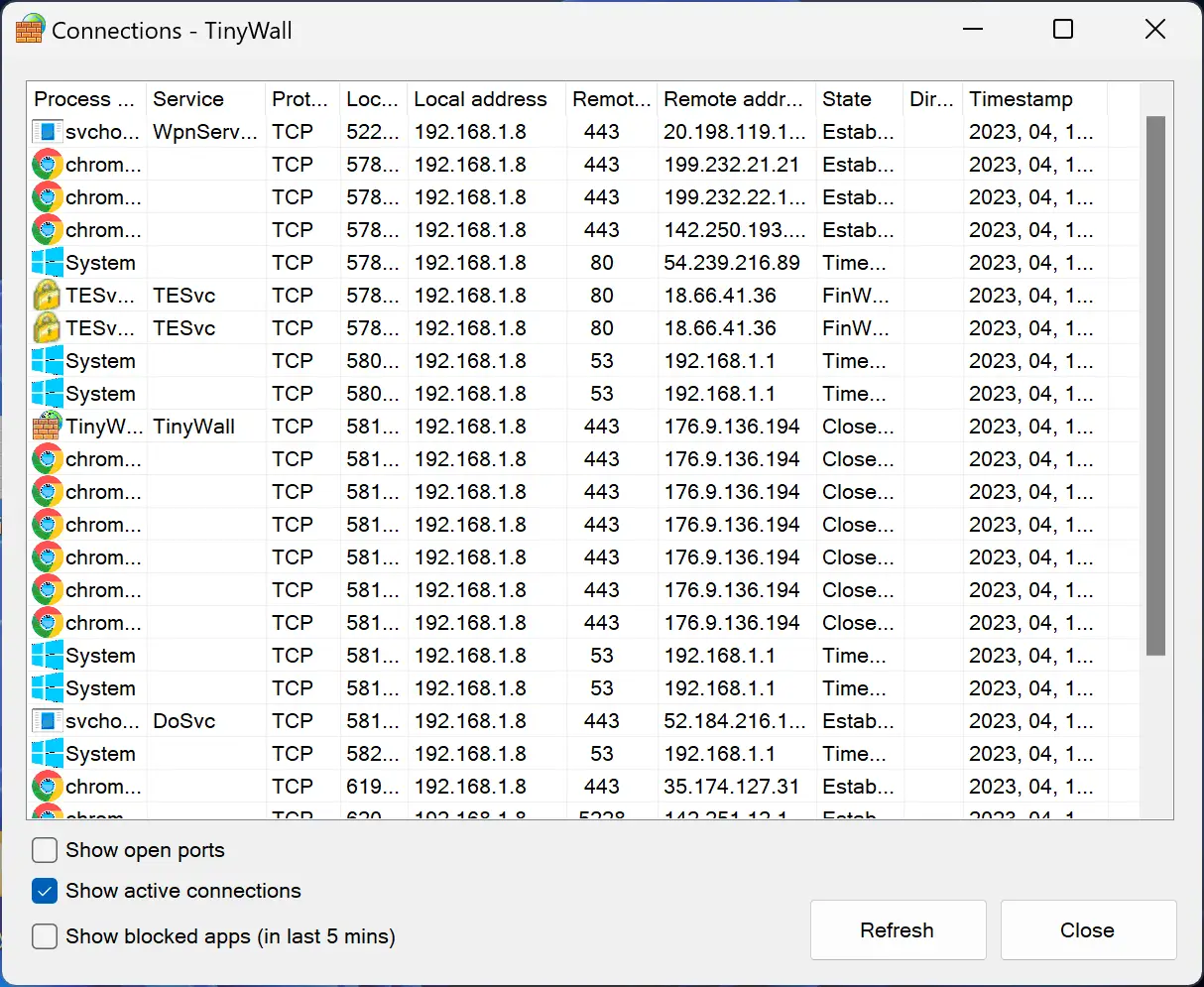Firewalls are essential tools for protecting your computer from online threats. They monitor and control the incoming and outgoing network traffic and block any suspicious or unauthorized activity. However, not all firewalls are created equal. Some offer more features and customization options than others, while some are more lightweight and user-friendly. In this blog post, we will compare two popular free firewall programs: ZoneAlarm Free Firewall and TinyWall. We will evaluate them based on their performance, security, usability, and compatibility.
Performance
One of the main factors to consider when choosing a firewall is how much it affects your system performance. Ideally, you want a firewall that does not slow down your computer or interfere with your online activities. ZoneAlarm Free Firewall and TinyWall both claim to have minimal impact on your system resources. However, according to some tests conducted by PCMag, ZoneAlarm Free Firewall scored slightly better than TinyWall in terms of CPU usage and memory consumption. ZoneAlarm Free Firewall also has a game mode feature that automatically adjusts its settings to optimize your gaming experience.

Security
Another important factor to consider is how well the firewall protects your computer from malware, hackers, and other online threats. ZoneAlarm Free Firewall and TinyWall both use the Windows Filtering Platform (WFP) to filter the network traffic. However, they have different approaches to managing firewall rules. ZoneAlarm Free Firewall uses a predefined list of trusted programs that are allowed to access the internet and prompts you to allow or deny any new program that tries to connect. TinyWall, on the other hand, uses a whitelist approach that blocks all programs by default and lets you manually add the ones that you trust. This means that TinyWall is more secure by default but also more restrictive and requires more user intervention.

Usability
Another factor to consider is how easy it is to use and configure the firewall. ZoneAlarm Free Firewall has a simple and intuitive interface that lets you adjust the security level, view the firewall status, and manage the program permissions. It also has a built-in help system that provides useful tips and explanations for each feature. TinyWall has a minimalist interface that consists of a small icon in the system tray and a pop-up menu that lets you access the main functions. It does not have a help system or a user manual, but it has a tutorial that guides you through the basic steps of setting up the firewall.
Compatibility
The last factor to consider is how compatible the firewall is with other security software and operating systems. ZoneAlarm Free Firewall and TinyWall both work well with Windows 10, 8.1, 8, and 7. However, ZoneAlarm Free Firewall may conflict with some antivirus programs or VPN services that also use the WFP. TinyWall does not have this issue, as it does not modify the WFP settings or interfere with other security software.
Conclusion
In conclusion, ZoneAlarm Free Firewall and TinyWall are both reliable and effective free firewall programs that offer basic protection for your computer. However, they have different strengths and weaknesses that may suit different users’ needs and preferences. ZoneAlarm Free Firewall is more user-friendly and has more features and customization options than TinyWall, but it may also consume more system resources and cause compatibility issues with some security software. TinyWall is more lightweight and secure than ZoneAlarm Free Firewall by default, but it also requires more manual configuration and may block some legitimate programs from accessing the internet.